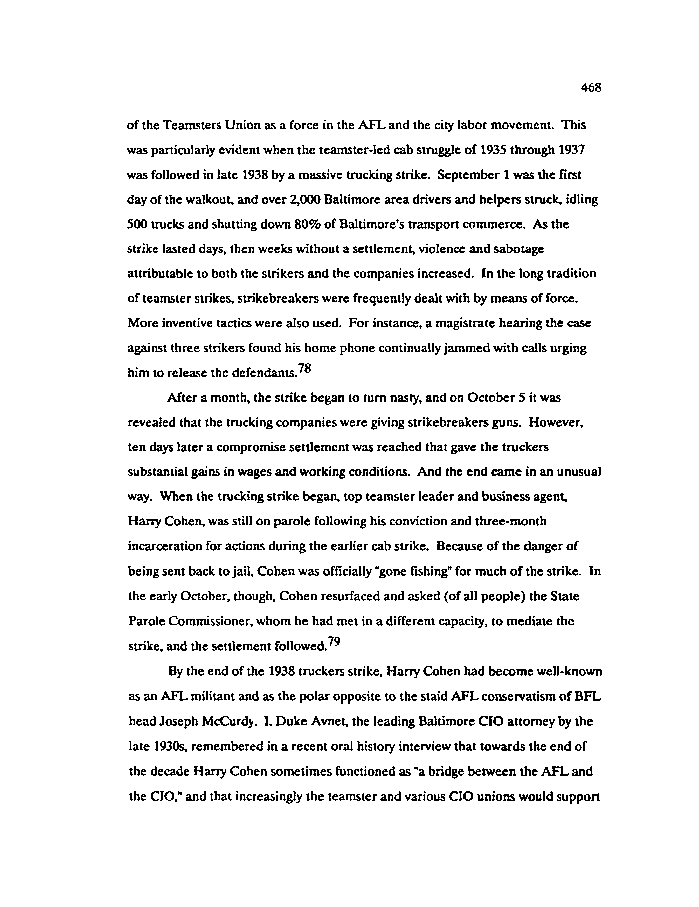|
468
of the Teamsters Union as a force in the AFL and the city labor movement. This
was particularly evident when the teamster-led cab struggle of 1935 through 1937
was followed in late 1938 by a massive trucking strike. September 1 was the first
day of the walkout, and over 2,000 Baltimore area drivers and helpers struck, idling
500 trucks and shutting down 80% of Baltimore's transport commerce. As the
strike lasted days, then weeks without a settlement, violence and sabotage
attributable to both the strikers and the companies increased. In the long tradition
of teamster strikes, strikebreakers were frequently dealt with by means of force.
More inventive tactics were also used. For instance, a magistrate hearing the case
against three strikers found his home phone continually jammed with calls urging
him to release the defendants/"
After a month, the strike began to turn nasty, and on October 5 it was
revealed that the trucking companies were giving strikebreakers guns. However,
ten days later a compromise settlement was reached that gave the truckers
substantial gains in wages and working conditions. And the end came in an unusual
way. When the trucking strike began, top teamster leader and business agent,
Harry Cohen, was still on parole following his conviction and three-month
incarceration for actions during the earlier cab strike. Because of the danger of
being sent back to jail, Cohen was officially "gone fishing" for much of the strike. In
the early October, though, Cohen resurfaced and asked (of all people) the State
Parole Commissioner, whom he had met in a different capacity, to mediate the
strike, and the settlement followed.79
By the end of the 1938 truckers strike, Harry Cohen had become well-known
as an AFL militant and as the polar opposite to the staid AFL conservatism of BFL
head Joseph McCurdy. I. Duke Avnet, the leading Baltimore CIO attorney by the
late 1930s, remembered in a recent oral history interview that towards the end of
the decade Harry Cohen sometimes functioned as "a bridge between the AFL and
the CIO," and that increasingly the teamster and various CIO unions would support
|

